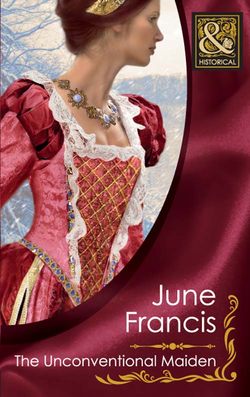Читать книгу The Unconventional Maiden - June Francis, June Francis - Страница 6
ОглавлениеAUTHOR NOTE
Perhaps it’s because my husband was a printer and I’m a novelist that the early days of printing should hold a fascination for me. It was William Caxton who introduced the printing press into England, and his first book was printed in 1477. By the time of 1520, when this story is set, the handwritten book was being superseded by the printed one at a rate of knots.
At first most books were religious ones, and Henry VIII had a bestseller on his hands when he wrote a slender volume in defence of the seven sacraments of the faith in response to the writings of the German priest and professor of theology Martin Luther. It was illegal to print and distribute leaflets of the teachings by him, and could be punished by death. During the Tudor period printing really took off, and more people wanted to learn to read. Their interests were not only in religion, but in such subjects as the classical period of the Greeks and Romans, hawking and, of course, Chaucer’s Canterbury Tales—the bestseller of its day. I have used a little poetic licence by having it printed before it actually was. Poetry itself was extremely popular.
There were, of course, those who considered it dangerous to make the printed word so readily available to so many people. Goodness knows what would happen if more merchants, artisans and even the masses were ever to learn to read and to think for themselves! It could lead to revolution!
Ladies in particular were considered by some to be too delicate and weak to cope with some of the material coming off the presses, never mind their actually writing for publication themselves. But of course there were women who wrote books—mostly religious, or to do with the organisation of one’s household—and of course there were those men and women who kept journals and reported on great events of the day.
Printed books were expensive, and it was to be some time before the masses were to be taught to read and write, but as we all know it eventually happened and books are now read by millions. But that makes me think about the revolution in reading habits that is taking place now. Some of us believe there is nothing so aesthetically pleasing as to hold a brand-new hardback borrowed from the library, whilst some love to snuggle up in bed with a good paperback. Others much prefer to download a whole load of eBooks onto a reader—especially when they’re going on holiday.
I’d like to finish by telling you about a small old book of almost six hundred pages that belongs to my husband. It gives me a special feel when I hold it. It was printed in 1824 and has a woodcut of William Caxton on one page. On another is the title Typographia or the Printers’ Instructions by J. Johnson, printer. It includes an account of the origins of printing. What’s so great about that? you might ask, but inside is printed a dedication to the Right Hon. Earl Spencer, KG, president of the Roxburghe Club and its members, who include the writer Sir Walter Scott. The Earl, of course, is an ancestor of Prince William—our future king.
June Francis
